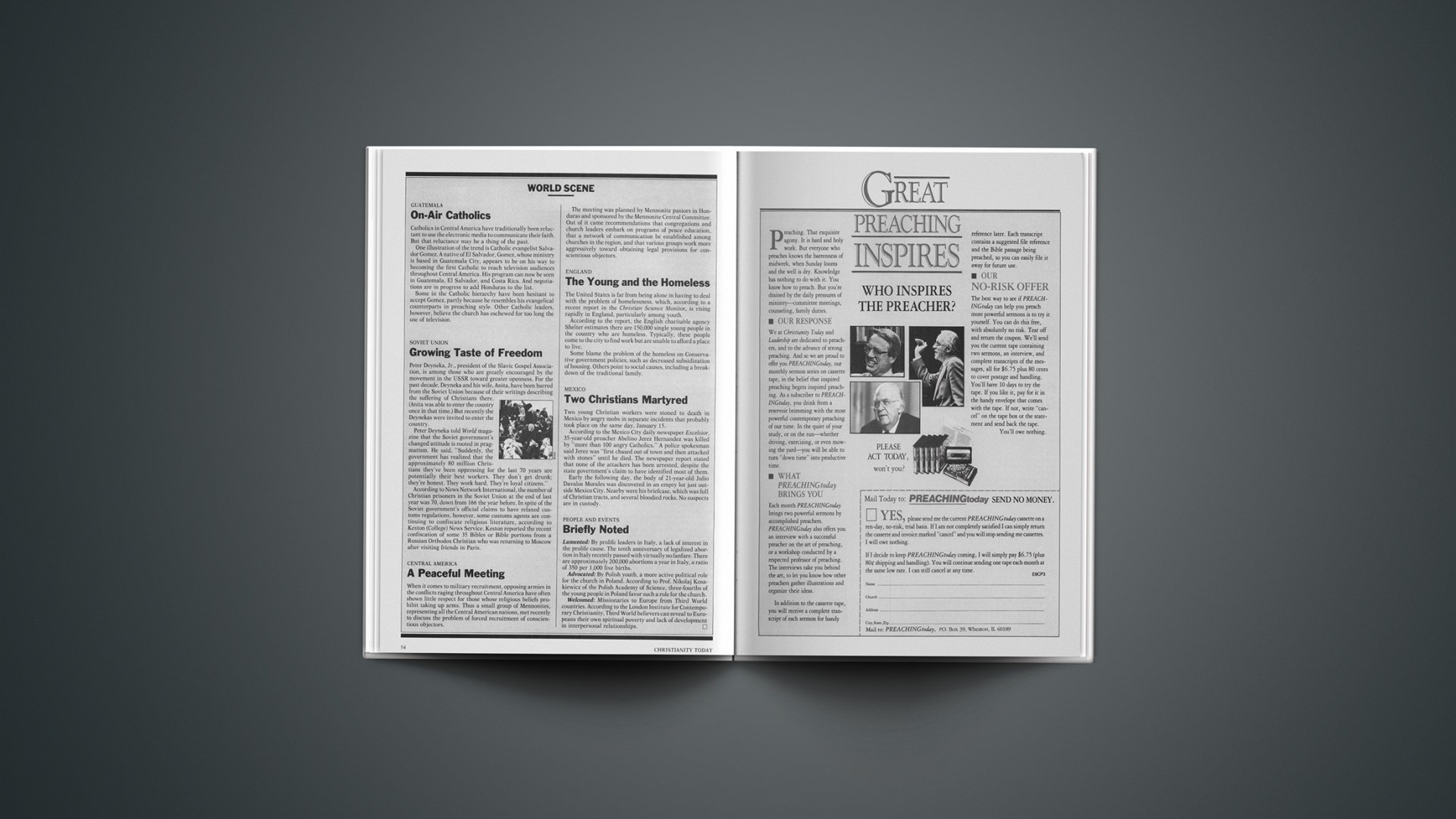An area on Chicago’s northwest side was once known as “Andersonville” because of the preponderance of Scandinavians living there. That same section is now called “Koreantown.” Says Young Woon Lee, youth pastor at a Korean church in the area, “You could live here and never need to speak English.”
This anecdote typifies the way the Korean community in the United States has mushroomed. The growth is relatively recent; at the end of World War II there were fewer than 10,000 Koreans in this country. But new U.S. immigration laws in the late 1960s, along with the difficult political and economic times in Korea that followed the Korean War, combined to produce a vibrant Korean community in America whose population now exceeds one million.
As the Korean population has multiplied, so have Korean churches. “In 1965 when I came to the States, there were 2 Korean churches in Chicago and about 30 throughout the United States,” recalls Il Sik Sam Choe, general secretary of the Korean World Mission Council and a former Korean church pastor. “Now there are more than 140 in Chicago and almost 2,000 in the United States.”
Southern California is home to over 600 Korean churches; there are more than 400 in New York City, and about 120 in the Washington, D.C./Baltimore area. Eighty percent of the Korean churches in the U.S. are under 15 years old; some 70 percent do not own their own facilities.
Gathering Place
The Korean church in America has retained much of the character of the church in Korea: an emphasis on home cell groups, early morning prayer (6 A. M.), and Friday late-night or all-night prayer meetings. As in Korea, the most popular church tradition among U.S. Korean churches is Presbyterianism. But the single denomination to which the greatest number of ethnic Koreans in the U.S. belong is the Southern Baptist Convention (SBC).
In the U.S., the Korean church has functioned as the central social institution for the Korean community and as a bridge to American culture. According to Dan Moon, director of Korean Church Growth for the SBC, attending church is a respite after a long week’s work for many ethnic Koreans, whether or not they are Christians. In fact, only about one-fourth of Koreans in the U.S. are believers, according to most estimates, though 70 percent attend church regularly.
Pastors help newcomers find their way in American society, and churches provide an outlet through which Koreans can speak their mother tongue and keep their children in touch with their cultural heritage.
Part of the story of the Korean church in America is a story of personal rivalries and accompanying divisions. Moon said that in the past, disagreements have spawned many a new Korean church “right next door.”
But a recent emphasis on reaching other cultural groups has produced a spirit of cooperation among Korean churches. Said Choe, “Churches are working together in a new way in order to awaken their members to the challenge of cross-cultural missions.”
Fifteen regional committees and the participation of several key denominational leaders have helped lay the groundwork for unprecedented interdenominational cooperation on a national level. One of the results was the first missions conference for the entire Korean-American church, held last summer.
Generation Gap
Korean pastors, parents, and children generally agree that the Korean church’s biggest problem is reaching second-generation Koreans. Those reared on “Sesame Street” and Big Macs often do not speak fluent Korean or understand how the older generation thinks.
One need is for teaching and worship in a language second-generation Koreans fully understand (English). With 70 percent of Korean churches having fewer than 100 members, most lack the resources to minister effectively to the second generation. Many Korean pastors speak little or no English.
But according to Faith Kim, professor of Christian education at Golden Gate Baptist Seminary, the generation gap is more cultural than linguistic. “The second generation thinks more in autonomous, American ways than in the hierarchical, Korean manner,” she said.
The cultural tension has created a need for bicultural church leadership that can bridge the gap. “There are enough gifted young people in our churches,” said Kim, “but church structures often do not allow them to grow into leaders.”
American workers have, to some extent, filled the gap. But Kim said, “We cannot rely on Caucasians for our leadership needs. They cannot build community between the generations, because they only understand the American side.”
Sang-Bok David Kim, chairman of pastoral ministries at Washington Bible College, said there is an “almost dangerous shortage of bilingual, American-educated leadership in the church.” He estimates there are between 400 and 500 Korean-American students currently in Bible schools and seminaries. “That’s encouraging,” he said, “but that is not nearly enough for all the churches.”
Faith Kim, however, casts the church’s challenges in a positive light. “Tension makes us more creative people,” she said. “Abraham, Moses, and many of the prophets were immigrants. They were all used by God, and they were all people with a tension.”
By Dan Moul.










